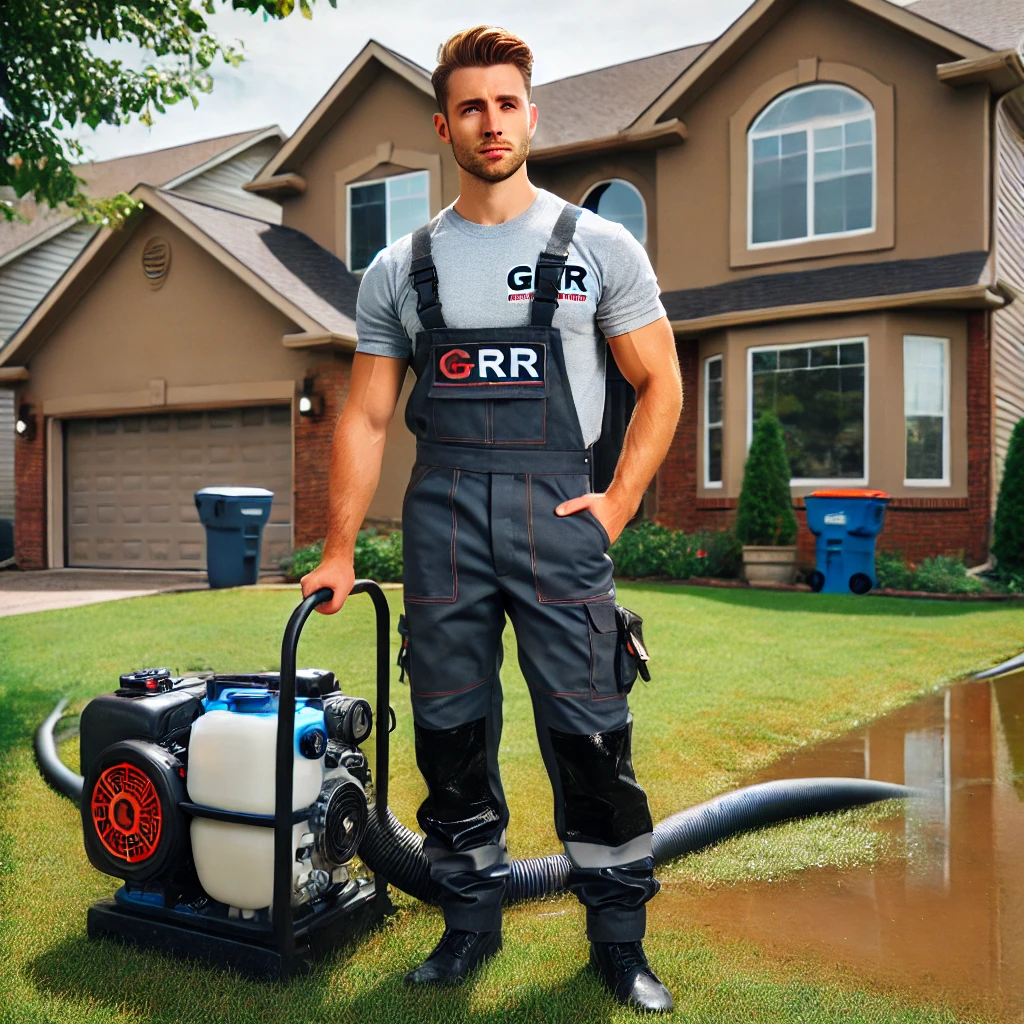Preventing Water Damage: Maintenance Tips for Homeowners. The opinions expressed by the author in this and all guest blogs are not necessarily those of Gainesville Restoration and Remodeling.
Preventing water damage in your house helps your expensive investment keep its integrity. Knowing what to look for, maintaining the plumbing and gutter system, and warding off water blight will protect your home and its resale value.

The average water bill is $73 a month for a family of four — higher if you water the lawn, have a pool, or have a larger family. But no matter how much water you consume, the amount (and price) will be higher with dripping faucets and leaky pipes.
Here are a few tips to prevent water damage in the house — and cut down on the utility bill.
Look Up the Hook Up
Do your homework; understanding how the house’s main water line works allows you to be in control — as much as you can be. Knowing where the main water line hookups are is important in cases of overflows and water leaks.
For example, backflow preventers are devices installed on pipes to draw water flow in one direction, but never the opposite way. The idea is to keep drinking water fresh and uncontaminated.
Shut-off valves may be located in the garage, basement, or near an outside faucet. While you’re at it, find out where the valves are for faucets, sinks, toilets, washing machines, bathtubs, hot water heaters, and anything else that uses water in the house.
Outdoors
At least 3 or 4 times a year, grab your own “handyman” checklist and inspect the outside of the house and property. Maintaining the roof, gutters, downspouts, and sewage lines is part of the plan.
Gutter Lanes and Sewage Lines
Gutters and downspouts get clogged with leaves, palm fronds, and debris. Standing water flows over the roof, creating puddles that are damaging to the house siding and foundation. Clean out the gutters every six months or so.
Cover downspouts with rust proofed steel mesh netting to keep leaves and bird poop out of the base.
Sewage lines connect water systems to pipes. Clogged, gritty sewage lines can keep water from moving freely. They may force old, flimsy piping to burst. Store-bought drain cleaners work for light clogs but thick masses create heavy backups that end up in sinks and toilets. Sewage line maintenance is best done by a professional.
Disconnect
On an unexpectedly cold Florida night, water might freeze in the lines.
Remove unused hoses from all outdoor faucets during fall and winter, even if the temperature stays well above 32 degrees F. Dripping hoses and standing water may not absorb into the ground.
Replace hard-to-turn faucets, washers, and heads.
Sprinkling Systems
Sprinklers with hose attachments are easy to care for but automatic watering systems need a bit of maintenance, every now and then. Drain the sprinklers by opening the valves. Remove water, filters, and the pressure regulator. Seal the open faucet to protect it from bugs, dirt, and water. If there’s a water line break, you might see puddles of water and low pressure in the system.
Trees, Shrubs, Roots
Large trees and shrubs have far-reaching root systems. Spreading roots find their way into and under pipes, masonry, sewage lines, and cement. DIY or hire a pro to remove tree roots and anything else finding its way into the plumbing system.
Indoors
Indoor water damage is generally pretty easy to spot. Water stains on wallpaper and drywall indicate a leak in the pipeline somewhere. Leak detection units give a heads-up on a variety of issues, such as
- Damp flooring, wet spots, and puddles
- Warm areas on the floor (that may be a sign of a hot water leak)
- Growing mold (Mold on the floor, baseboards, and walls is a sign that water is coming in)
- Reduced water pressure (Decrease in water pressure often means a pipe leak)
- Wall or flooring cracks (They may be the result of shifting foundation)
- Increase in water bills
Toilets and Faucets
Running toilets and leaky faucet drips can run up your water bill. There may be puddles of water around the toilet or dripping in the sink. (A steady drip in the sink can eat away at the enamel around the drain). Replacing toilet innards or faucet washers is easy for some people, but not everyone can do it — don’t be afraid to call a plumber.
Appliances
Household appliances don’t last forever. Washing machines, dishwashers, and refrigerators are prone to leaky hoses. Inspect hoses and valve intakes every few years (at least). Replace as necessary.
A few drops of water may not seem like much, but they can really add up to foundation damage and high utility bills. Whether you DIY, call a plumber, or a restoration and remodeling specialist, preventing and fixing long-term water damage starts with that handy checklist.

Teri Silver is a journalist and outdoor enthusiast. She and her husband live on 5 acres with a vast lawn, three gardens, a farm, a pond, many trees, and a lot of yard work! The best parts of the year are summer and fall when home-grown veggies are on the dinner table.


